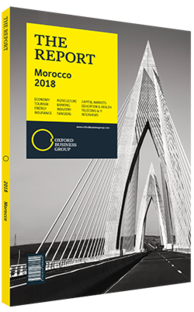Global impacts of trend towards lower corporate tax rates
Recent decades have seen a downward trend in corporate taxation. Headline corporate tax rates have fallen by 20 percentage points since the early 1980s, with the advanced economy average dipping to 22% in 2015. Investment incentives have further reduced effective rates for transnational corporations. After the 2007-08 global financial crisis, many countries had to slash spending and raise revenue to rein in deficits, but lower corporate taxes persisted. In the face of post-crisis austerity, however, public tolerance of corporate tax avoidance has dissipated, thus increasing political momentum to improve transparency and limit loopholes. The OECD, in cooperation with the G20, partner countries and emerging markets, has led this charge to reduce base erosion and profit shifting.
DEVELOPED MARKETS: In a 2017 review of its 35 member countries’ tax policies, the OECD highlighted intensifying competition. For example, 12 countries reduced or announced plans to reduce headline corporate tax rates in 2016-17, with only Chile and Slovenia hiking them. The most dramatic change was Hungary’s corporate tax rate reduction from 19% to 9%.
The US resisted cutting corporate tax rates until late 2017. With a headline rate as high as 39.1%, its corporate taxes were more than 10 points higher than the advanced economy average. In December 2017 the US Congress reduced this to 21%, following the global trend. Additionally, a 15.5% amnesty rate is to be applied to historical profits to encourage repatriation. Another key change was a territorial-based corporate tax regime, meaning US taxes will not be levied on global profits, rather only on the portion generated in the US itself. However, this could encourage offshoring.
EMERGING MARKETS: The OECD highlighted other emerging markets in Europe and MENA, notably Israel and Slovakia. The Czech Republic and Slovenia have also reduced rates since 2008. Turkey, with the introduction of its so-called super tax incentive model, alongside incentives for research and development investment, was a main mover in 2016, while Hungary, Poland and Mexico signalled intentions to improve tax incentives. This is not a new phenomenon: the IMF has identified a “partial race to the bottom” in global corporate tax regimes. Evidence of this was particularly strong in African countries, where many effective corporate tax rates had fallen to zero. Large declines in effective rates also took place in Egypt, Ghana, Kenya and Morocco in the decade leading up to the financial crisis.
IMPLICATIONS: While quantitative analysis by the IMF suggests higher tax rates adversely affect both domestic and foreign investment, even if they raise some public revenue in the short run, long-term trends towards lighter corporate taxation in advanced and emerging markets have had a knock-on impact on developing and least-developed countries. In some cases, profits on activities carried out in developing countries are diverted to friendlier corporate tax regimes in advanced economies. According to Oxfam, corporate tax avoidance causes $100bn in lost revenue for developing countries, while the South Africa-based NGO Action Aid puts this figure at $138bn. In theory, low corporate taxes should encourage productive investment. However, investment slowed in the 2007-17 period. Rather than reinvesting earnings to expand, large corporates have generally hoarded cash or returned it to shareholders as dividends or share buy-backs. Wealth remains concentrated in the hands of shareholders, while countries need to increase other taxes or reduce spending to maintain healthy public finances.
Nonetheless, many countries are working on phased multi-year rate reductions. The medium-term outlook for corporate taxes is therefore clear: globally coordinated efforts to improve transparency and curb legal tax avoidance schemes are changing the landscape to a certain degree, but have not slowed the emergence of new or redesigned incentives. This appears to be the more intense arena for tax competition among countries, albeit perhaps with clearer rules of the game.
You have reached the limit of premium articles you can view for free.
Choose from the options below to purchase print or digital editions of our Reports. You can also purchase a website subscription giving you unlimited access to all of our Reports online for 12 months.
If you have already purchased this Report or have a website subscription, please login to continue.

